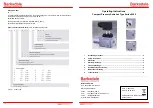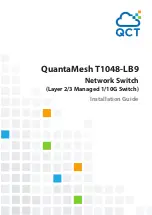
Touch-MyDesign Plus
http://www.zennio.com
Technical Support:
http://zennioenglish.zendesk.com/
17
Action
: assigns each of the two buttons the value to be sent through “
[X]
Binary Control
” (which has the Write flag enabled, so the state of the switch
can be updated from external devices). The options are “Left: Off; Right: On”
and “Left: On; Right: Off” (or “Down: Off; Up: On” and “Down: On; Up: Off”
under a horizontally-oriented configuration; see section 2.1).
Note
:
this parameter will remain hidden unless having selected “Every button
pair is configured separately” in Button Pair Action (see section 2.1)
.
LED Illumination Control
: sets the behaviour of the LEDs on the buttons. The
options are “Regular”, “State-dependent”, “State-dependent (both LEDs)” and
“Dedicated Object”.
In case of selecting the latter, the object “
[X] LED On/Off
” will be included in the
project topology.
Note
:
this parameter will remain hidden unless having selected “Every button
(pair) is configured separately” in “LED Illumination Control (All Buttons)”
(see 2.1)
.
Dimmer
Figure 11
Pair Buttons – Dimmer.
The switch orders will be sent through the “
[X] Light On/Off
” one-bit object, while the
increase/decrease orders will be through the “
[X] Light Dimming
” four-bit object. The
first one has the
write
flag enabled so it can receive feedback from the dimmer about
the on/off status. Similarly, the “
[X] Light Dimming (Status)
” one-byte object can be
linked to the light level status object of the dimmer (in fact, this object is only intended
to receive values from the bus, not to send them). As explained in 2.2.1.2, the
alternation of the on/off and step requests will be conditioned to these statuses, to
prevent sending ineffective requests.
The parameters for this function are:
















































